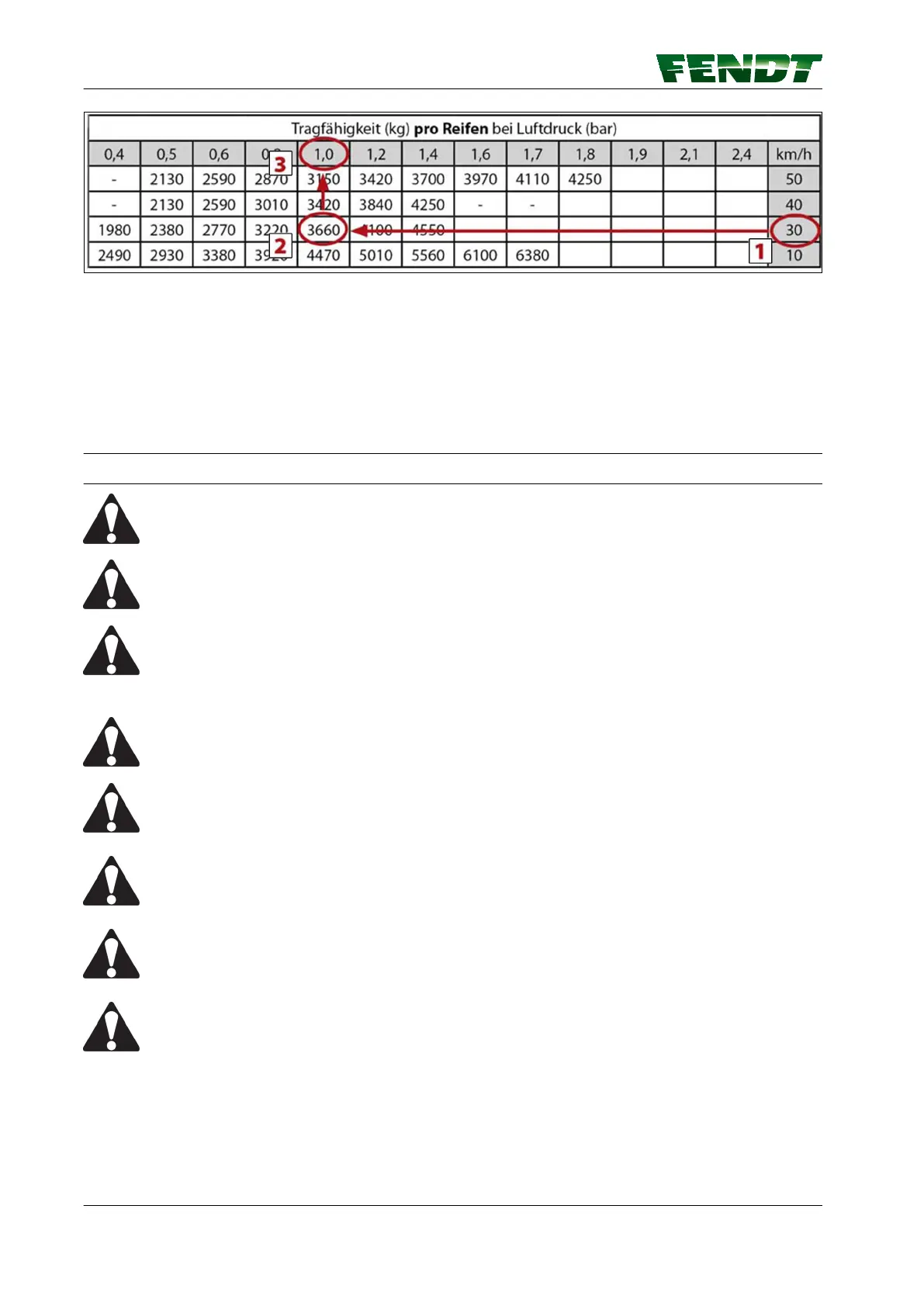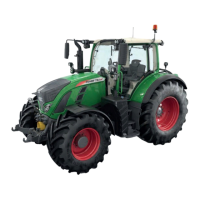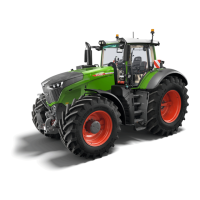Fig. 1
Based on the maximum speed (1), the air pressure (3) is selected according to the wheel load (2).
IMPORTANT:
The maximum/minimum pressure specified by the manufacturer must always be observed.
NOTE:
The tire pressure must be increased if the tractor is required to provide high torques, i.e. when driving with
high tractive effort at low speed (e.g. plowing). In general, the tire pressures for 30 km/h apply in this case.
4.2.2 Change wheels
DANGER:
Secure the tractor to prevent it rolling.
DANGER:
Always use support stands when working on the vehicle
WARNING:
Make sure that the surface on which jack is placed is flat, solid and non-slip. Do not place
wooden blocks or similar supports under the jack. Otherwise, the vehicle may fall off the
jack and seriously injure you.
WARNING:
Do not start the engine at any time while changing wheels.
WARNING:
The jack is only intended to lift the vehicle for a short period of time while wheels are
being changed.
WARNING:
Make sure that the permissible vertical load capacity and lifting height of the jack are not
exceeded.
WARNING:
Extra equipment such as wheel weights, twin tires etc. must be removed before changing
a wheel.
CAUTION:
After changing tires on the front axle, always ensure wheels have sufficient clearance
even with spring compression and rebound. Adjust steering angle if necessary.
If you do not position the jack under the jacking point correctly, the vehicle
• may fall off the jack
• and you or other individuals
• may be injured.
Instructions for using wheel nuts
4. TECHNICAL DATA
250 Maintenance
530.020.020.011 Rev.A

